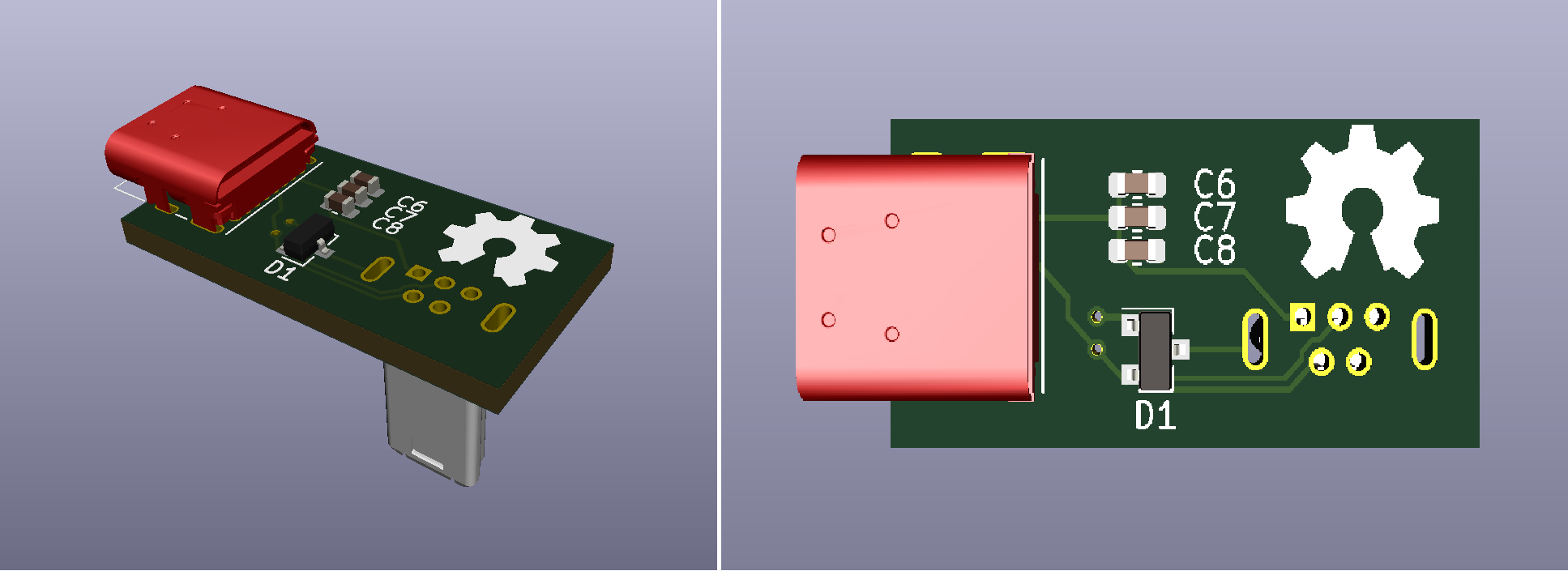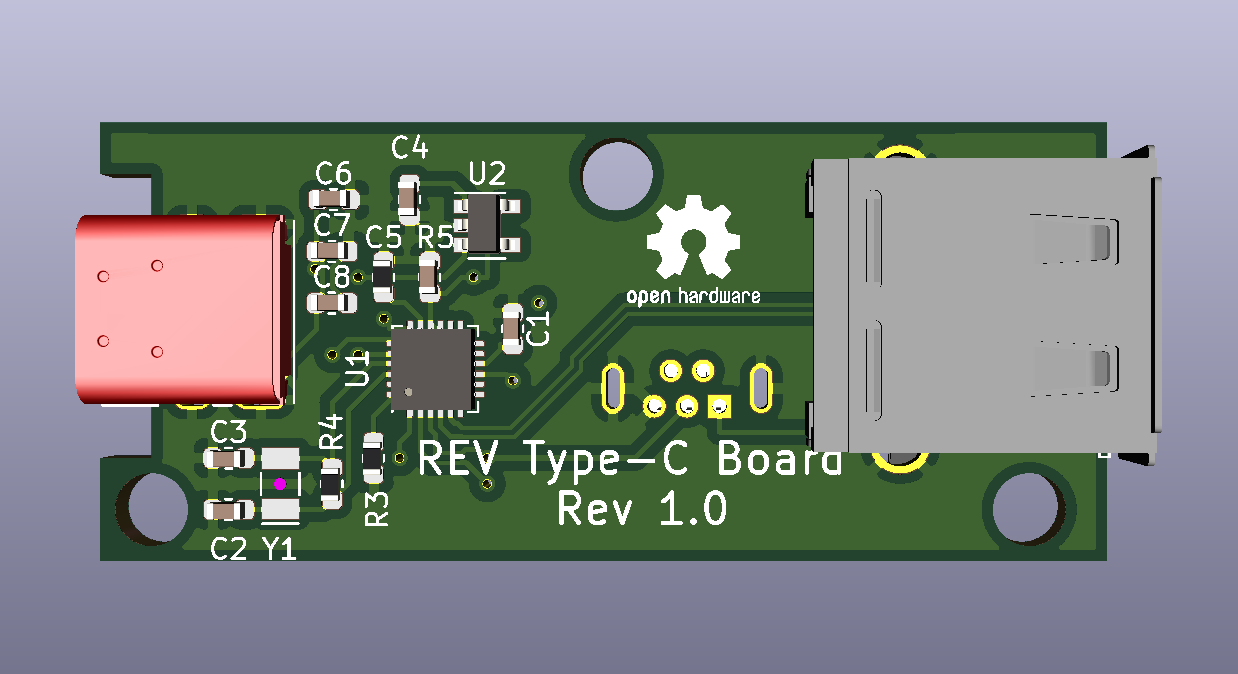-
V2
07/23/2019 at 15:38 • 0 comments[Come back later for the write-up.]
-
USB Research
07/23/2019 at 15:37 • 0 commentsIt's no secret that most USB hubs have 4-layer PCBs. However, making 4-layer PCBs would have easily quadrupled the cost per PCB and increased development time over a 2-layer design. So what would happen if someone tried to make a 2-layer hub?
sigh
So..... here's my research (and writeup) for how I overcame this issue:
https://www.reddit.com/r/electronics/comments/c365zm/a_quick_guide_to_highspeed_usb/
With that, on to version 2! -
V1
07/23/2019 at 14:38 • 0 commentsThis is a little journey back into the prototyping for this project.
It all started with a dream...
The original idea:
- Create a board that would simply convert the Mini-B connector on the REV Expansion Hub to a Type-C port.
- Include ESD protection on the USB lines for extra disconnect resistance.
- Make sure it's sturdy and can last for much longer than a Mini-B cable.
And thus, the mini V1 prototype was born:
![]()
However, after I did some polling of interested customers, about 2/3 of teams responded that they would also like to use a webcam on their robot. That would mean introducing a USB hub into the wiring of the robot, which can lead to disconnects from the sheer number of connections.
So what's the solution? Slapping a USB hub controller on the board, obviously.The IC used was a USB2422 from SMSC (Microchip). This is the absolute smallest 2-port USB hub chip available. The LDO was an NCP170 LDO. Unfortunately, I learned the hard way that you can't just willy-nilly route the USB lines on a 2-layer board, because no matter what I tried, I was always greeted with USB errors.
It was time for some research...
REV Expansion Hub Type-C Adapter
Adding a more robust connector & USB Hub to the REV Expansion Hub
 Thomas Bladykas
Thomas Bladykas sigh
sigh

